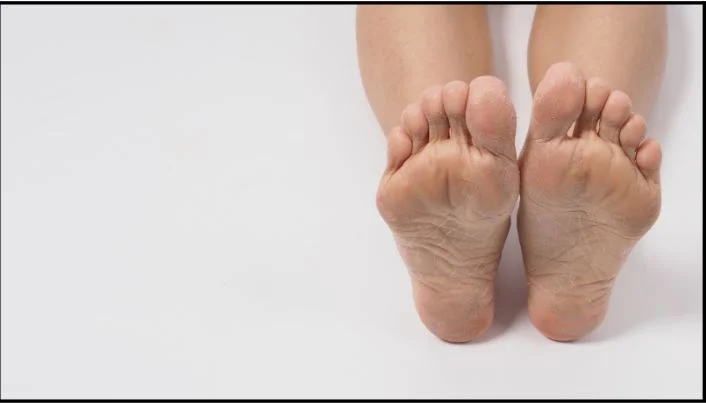What Your Feet Are Trying to Tell You About Your Health?
Your feet are more than just a way to get around, they can offer important clues about your overall health. From changes in the skin to unusual pain or swelling, your feet can signal underlying conditions like circulation issues, nerve problems, or even diabetes. Paying attention to these signs can help catch health problems early, allowing you to take action before they become more serious.
In this article, we’ll explore what your feet might be telling you about your health and why taking care of them is essential for your well-being.
The Foot-Body Connection: Your Foundation for Preventive Healthcare
Your feet serve as the literal foundation for your entire body, bearing your weight and absorbing impact with every step. When something’s amiss with this foundation, the effects can cascade throughout your entire system. Understanding this connection is crucial for comprehensive preventative care.
Why Primary Healthcare Begins at Your Feet
The biomechanical impact of foot health extends far beyond your ankles. Improper alignment, collapsed arches, or foot pain can alter how you walk, creating a chain reaction that affects your knees, hips, and spine. A podiatrist near me will often examine your feet during regular check-ups because they provide valuable diagnostic clues.
Many Medicare primary care programs now include foot examinations as standard preventative care. This shift reflects the understanding that early intervention in foot health can prevent more serious complications. Research shows that primary care physicians identify approximately 30% of systemic health conditions through foot-related symptoms.
The Aging Foot: Critical Changes for Senior Health Monitoring
As we age, our feet undergo significant changes that merit special attention. The fat pads that cushion our soles thin out, arches may fall, and circulation often diminishes. These changes aren’t merely inconvenient, they can be critical indicators of your overall health status.
Affordable senior healthcare increasingly emphasizes foot monitoring because these changes often precede other symptoms. Senior health clinics specializing in geriatric care recognize that foot assessments are essential components of chronic condition management. Regular podiatric check-ups for older adults, often covered by Medicare, can help detect early signs of diabetes, arthritis, or vascular disease.
Now that we understand how foot health connects to your overall well-being, let’s explore how circulatory symptoms in your feet might signal issues elsewhere in your body.
Circulatory Warning Signs: When Your Feet Signal Vascular Issues
Your feet contain a network of blood vessels that can reveal important information about your cardiovascular health. Changes in color, temperature, or sensation often indicate circulation problems that might affect your entire body.
Discoloration Patterns That Require Immediate Attention
Blue or purple toes aren’t just unsightly; they can signal peripheral arterial disease, a condition where narrowed arteries reduce blood flow to your limbs. This same narrowing may be happening in arteries supplying your heart or brain. Primary health care services often begin treatment for vascular issues after noticing these foot symptoms.
Red or white color changes, especially in response to cold or stress, might indicate Raynaud’s syndrome, an autoimmune condition affecting blood vessels. Primary care providers often use these visible symptoms to help diagnose autoimmune disorders that may impact multiple systems.
Temperature Changes and Senior Wellness
Persistently cold feet may indicate more than poor circulation. They could signal thyroid dysfunction, which affects your entire metabolic system. Your thyroid regulates body temperature, and when it’s underactive, extremities like feet often feel cold regardless of external temperature.
Hot, burning sensations, especially at night, often point to neuropathy, nerve damage frequently associated with diabetes. Many senior wellness programs and the best Medicare doctors now include temperature assessments in foot examinations to catch these conditions early.
Moving beyond circulation, let’s examine how changes to your foot’s skin can provide valuable health information.
Skin Changes: Reading Your Body’s External Health Map
The skin on your feet serves as a visible map that can reveal internal health conditions. From texture to integrity, these changes offer early warnings about conditions that may be developing throughout your body.
Dry, Flaking Skin Beyond Cosmetic Concerns
Excessive dryness isn’t just uncomfortable, it can indicate thyroid disorders, nutritional deficiencies, or dehydration affecting your entire body. Different skin patterns correlate with specific health conditions: circular patches may suggest fungal infections, while general flaking might point to systemic issues.
Preventative healthcare for seniors should include skin assessments because early intervention can address root causes before they progress. Many family physicians near me begin by treating foot skin conditions, but continue with testing for related systemic disorders.
Wounds and Healing Abnormalities
Non-healing ulcers on the feet may signal diabetes, immune system dysfunction, or vascular insufficiency. When a small cut or blister refuses to heal, it often indicates that your body’s repair systems are compromised.
Primary health care providers often coordinate with wound specialists when they notice these symptoms. For seniors, especially, modern elderly healthcare services employ advanced wound assessment technologies to identify underlying causes quickly.
As we move from skin symptoms to joint pain, we discover another rich source of information about your overall health.
Joint and Pain Signals: Articulating Whole-Body Health
Joint pain in your feet often speaks volumes about inflammatory processes that may be occurring throughout your body. These signals can help identify systemic conditions before they cause damage to other areas.
Gout and Inflammatory Responses
Sudden, intense pain in your big toe, often referred to as gout, serves as a warning about metabolic disorders. This painful condition results from uric acid crystal accumulation and often correlates with increased risk for heart disease.
Family physicians near me frequently use toe inflammation as a diagnostic clue for investigating systemic inflammation. By addressing these foot symptoms, primary health care services can help reduce inflammation throughout your entire cardiovascular system.
Stiffness and Mobility Issues
Arthritis often appears in foot joints before affecting larger joints elsewhere. Morning stiffness or decreased range of motion in the toes can signal inflammatory or degenerative conditions that may eventually affect knees, hips, or hands.
These symptoms often prompt referrals to geriatric care specialists near me who use advanced approaches for managing inflammatory joint conditions. Primary health care professionals increasingly recognize that addressing foot arthritis early can prevent mobility limitations later.
Let’s now explore how nerve symptoms in your feet can provide crucial information about neurological health.
Nerve Symptoms: When Tingling and Numbness Speak Volumes
Nerve-related sensations in your feet, from tingling to numbness, often indicate issues that extend far beyond your lower extremities. These symptoms can provide valuable clues about metabolic, toxic, or neurological conditions.
Peripheral Neuropathy Beyond Diabetes
While diabetes is a common cause of nerve damage, other conditions can produce similar symptoms. Vitamin B12 deficiency, medication side effects, and environmental toxin exposure can all cause tingling or numbness in the feet.
Best Medicare doctors evaluate these symptoms comprehensively, looking beyond the obvious causes. Many primary health care providers use foot nerve symptoms as starting points for investigating a wide range of potential health issues.
Bilateral vs Unilateral Symptoms
Whether your symptoms affect one foot or both offers important diagnostic information. Bilateral (both feet) symptoms often indicate metabolic or systemic issues, while unilateral (one foot) problems might suggest pinched nerves or structural problems.
Elderly healthcare services increasingly incorporate detailed neurosensory testing to distinguish between these different types of nerve symptoms. This distinction helps primary care physicians develop more targeted treatment approaches.

Taking Steps Toward Better Health Through Foot Awareness
Your feet are windows into your overall health. By noticing changes in appearance, sensation, or function, you can catch potential issues early. Regular foot assessments by primary care providers are crucial for early detection and treatment. Medicare primary care programs now emphasize foot health in senior wellness programs, recognizing its importance for preventative care. Your feet carry you through life, so when they show signs of trouble, listen carefully. If you notice changes, consider what they might indicate about your health and seek the necessary care.
FAQs on Foot Health and Disease Prevention
- How Often Should I Get Foot Examinations with Age-Related Health Conditions?
Seniors with diabetes, heart disease, or arthritis should have comprehensive foot examinations at least quarterly. These regular check-ups allow your primary care services provider to monitor changes that might indicate worsening of existing conditions or development of new health issues.
- Can Foot Problems Be the First Sign of Diabetes Even with Normal Blood Sugar?
Yes, some patients develop neuropathy or circulation changes in their feet before their blood glucose reaches diagnostic thresholds for diabetes. Health screenings for seniors that include foot examinations can detect pre-diabetic conditions when lifestyle modifications might still prevent disease progression.
- What’s the Connection Between Heart Health and Cold Feet?
Cold feet often indicate poor circulation, which can signal peripheral arterial disease—a condition sharing risk factors with coronary artery disease. Primary care providers use this connection to identify patients who could benefit from cardiovascular evaluations, even if they show no other symptoms.






